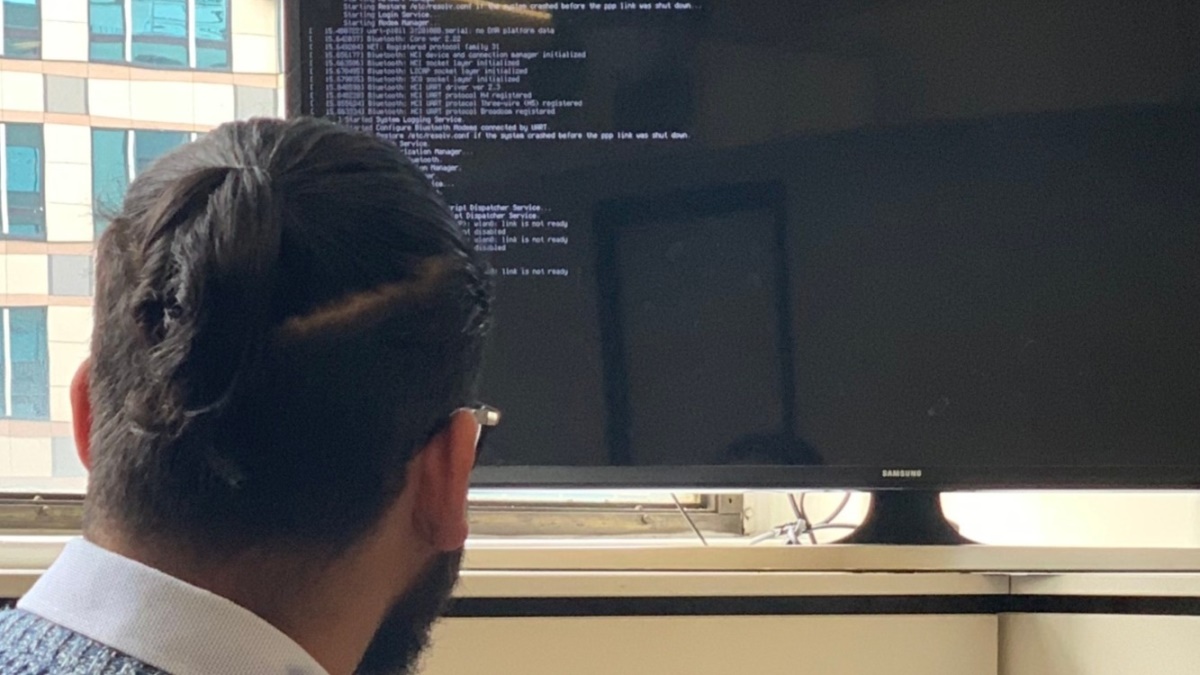It was 1996, I had just graduated high school and secured my place amongst the interns at Space Applications Corporation.
At the time I attributed this to my MIT admissions letter, one year of high school level computer science, and a successful interview. In hindsight, I recognize the value of a family introduction in even opening that door.
That internship led to another the next summer, at the David Sarnoff Research Center in Princeton. With two strong reference letters in hand and another family introduction, a year later I secured an internship at a NY Law Firm.
These early experiences in three different industries allowed me to explore career paths and develop basic work skills early, while I was still pursuing my degree. When I graduated from university, I had a track record of work and a list of projects that I could discuss at interviews.
This momentum into my early working life had a huge impact on my career and life, and it was only possible because senior professionals took the time and the risk to give me a hand up. I’m eternally grateful to them. I also recognize the un-level playing field that worked to my advantage and opened those doors.
Why Your Company Should Hire Interns
I’m a big believer in internships, and you should be too. But it’s not just because the only way I can repay the favors made to me is to pay it forward. It’s because it is good business.
Innovative companies need to be learning organizations. No matter how senior the staff that you hire, their skills start becoming obsolete the day they join. I have found that bringing interns and fresh graduates into your organization imbues a culture of learning and mentorship that affects all levels. This in turn attracts exactly the kind of life-long learners that stay relevant and drive innovation.
In all three of my last companies, the biggest challenge we had was finding enough skilled people to fill the roles we had. Growing companies cannot sit passively by hoping that universities and other organizations will train staff for them to poach when they need them.
Sustainable, predictable growth requires that companies establish a talent pipeline, and grow the staff of the future from the staff of today. Ideally, an industry culture that invests in human capital will create a kind of rising tide and lift all boats. This is a large component of the winning culture of Silicon Valley.
In Australia, interns can fall into two broad categories, paid interns and work placement. Many startups will seek out the latter as this is the only legal pathway to free labor in Australia.
There are restrictions, but there is a safe harbor for companies that work with universities to pre-approve the work placement. These rules are generally the same across universities as they are all grounded in the Fair Labor Practices.
We have successful work placement programs in two universities, here’s how we did it:
1. Start with Thinking About the Outcome for the Interns, Not the Outcome for the Business
While I believe internships are a win-win, we start with the interns. Coming from our context, and given the inherent power dynamic, we know we’ll end up getting plenty out of it in the end, so start with the interns.
2. Craft a Genuinely Educational Project for Your Interns
We reviewed our roadmap and identified categories of projects that were “nice to have” from a business perspective, but not “mission-critical” or “core”, and which would force a fresh graduate or current student to develop new skills.
3. Create Executable Projects for Your Interns
We rearranged the scope of projects so that interns could realistically achieve one or more meaningful outcomes in the time available (usually about 200 hours or 400 hours).
This was important for several reasons, but also because we want students to have some concrete achievements to reference back to in future interviews in their careers.
This should be something that looks good on a resume. Activities usually make for weak resumes. “Worked on” is not as compelling a bullet point as “achieved”. Remember you are getting the resource for free, so think about what is in it for them.
4. Be a Good Manager
We applied the SMART goals framework; Specific, Measurable, Actionable, Resourced, and Time-Bound. Interns are then empowered to create a work plan and manage expectations with their supervisor.
Interns are given an open door to ask for help. They are then given the space and time to get their work done.
These kinds of management fundamentals are always a good idea. It’s another example of how hosting interns helps your organization by reinforcing good fundamental culture.
It also teaches the interns the critical soft skills that will apply in any job environment.
5. List Your Job
We list directly with the universities, but there are also several aggregators. We scrub our job listings to minimize self-selection through implicit bias red flags. We try to fill our intern and junior hires using the most equal-access channels we can find.
Xailient invests in interns. I hope you’ll join us in investing in our shared future.

